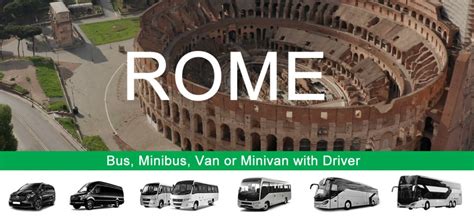
Roma's On-Demand Bus Revolution
Roma's On-Demand Bus Revolution: Transforming Periphery Mobility
Rome is pioneering a new era of urban mobility with its innovative on-demand bus service, Clic Bus. After a successful pilot in the Massimina neighborhood, the city is expanding this flexible transport model to eight additional peripheral areas starting May 1, 2026. This initiative addresses Rome's persistent challenge of connecting its sprawling outskirts to the city center, promising a more responsive and efficient public transport system.
How Clic Bus Works: The Future of Flexible Transport
The on-demand service operates through a dedicated mobile app where users can book rides within designated zones. Unlike traditional buses, Clic Bus doesn't follow fixed routes or have predetermined stops. Instead, it dynamically responds to real-time booking requests, adapting to passengers' specific destinations. The system assigns a unique booking code for boarding, with rides priced at standard integrated ticket fares.
This model is particularly suited for Rome's peripheral neighborhoods characterized by narrow streets, lower population density, and limited traditional bus coverage. The service will run through December 2027, with automatic extensions possible if Atac retains local transport contracts.
The Massimina Pilot: Mixed Reviews and Growing Pains
Launched in September 2024, Massimina served as the proving ground for Rome's on-demand bus experiment. While initially praised for convenience, residents report significant operational challenges.
"The first few times it seemed perfect, but then problems started: canceled trips, delays of up to 30 minutes, and the app often showing no availability,"explained Erika, a local resident.
These issues coincide with the elimination of two traditional bus lines (086 and 087) in Massimina. While the on-demand service replaced them, many residents feel the overall connectivity has deteriorated, particularly for essential trips to medical facilities or employment centers. The remaining traditional routes face reliability issues, with some passengers reporting hour-long waits for buses.
Expanding to New Frontiers: Eight New Zones
Building on the Massimina experience, Atac has launched a European tender to extend Clic Bus to three new operational areas:
- Trigoria – Castello della Cecchignola – Fonte Meravigliosa
- Falcognana – Paglian Casale – Santa Palomba
- Cinquina – Casal Monastero – S. Vittorino – Corcolle – Valle Borghesiana
These neighborhoods share similar characteristics with Massimina: significant distance from major transport hubs, limited commercial activity, and aging infrastructure. The expansion represents Rome's commitment to addressing mobility inequality across its peripheries.
Community Challenges Beyond Transport
The lack of reliable transport exacerbates deeper issues in these neighborhoods. Antonella Tancredi, president of Massimina's Pro Loco, highlights a broader service deficit: "We need a physical municipal office, stronger ASL healthcare presence, and recreational facilities. Without a car, young people struggle to pursue sports or access education."
Despite these challenges, Massimina maintains a strong community spirit. "It's rare in Rome – a neighborhood where everyone knows each other, almost like a small village," says Tancredi. This community cohesion helps mitigate isolation but cannot compensate for systemic infrastructure gaps.
The Road Ahead: Balancing Innovation and Accessibility
As Rome's on-demand bus service expands, the city faces critical decisions about service integration. The Massimina experience demonstrates that technological solutions alone cannot replace traditional networks without careful planning. Success will depend on:
- App reliability and real-time availability
- Maintaining complementary traditional routes
- Ensuring equitable coverage to vulnerable populations
- Addressing the broader service gaps in peripheral areas
For Rome's peripheries, Clic Bus represents more than convenience – it's a lifeline connecting residents to opportunity. The coming years will test whether this innovative model can truly bridge Rome's urban divide or merely serve as a technological Band-Aid for deeper systemic challenges.
Share this article
Alex Green
Lifestyle blogger covering modern living, personal growth, and cultural trends.